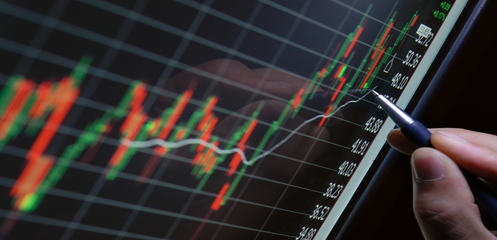 The basis of technical analysis in forex trading is identifying recurring patterns on price charts that have a high probability of pre-empting a future price movement. Technical analysts are not necessarily interested in the fundamental aspects driving the market such as news or events. Instead, they look for specific patterns, levels and indicators within the price charts to guide their trading decisions. These price chart elements allow traders to read markets across any time frame and, if traded with discipline, can result in the development of a profitable trading strategy.
The basis of technical analysis in forex trading is identifying recurring patterns on price charts that have a high probability of pre-empting a future price movement. Technical analysts are not necessarily interested in the fundamental aspects driving the market such as news or events. Instead, they look for specific patterns, levels and indicators within the price charts to guide their trading decisions. These price chart elements allow traders to read markets across any time frame and, if traded with discipline, can result in the development of a profitable trading strategy.
The oldest Dow Theory in technical analysis states that prices fully reflect all existing information. Knowledge available to participants (traders, analysts, portfolio managers, market strategists and investors) is already discounted in the price action. Movements caused by unpredictable events such as acts of god will be contained within the overall trend. Technical analysis aims at studying price action to draw conclusions on future moves.
Technical analysis is based on three important assumptions about market events. First, technical analysis posits that the prices discount all information available to the public. Secondly, it assumes that price movements are not random, and that technical tools can be used to establish the underlying currents behind the price action. Third, it claims that price trends tend to repeat themselves. In other words, past developments provide some guidance on the direction and magnitude of future price action.
Many traders advocate technical analysis as the most reasonable method to attempt to predict prices. That opinion is based on the idea (and cliche) that the "market action discounts everything". That statement means that all factors that can be known that can impact currency prices are already reflected in the currency price. (Of course, few technical traders would dare ignore pending events, such as the release of economic reports etc).
Traders rely on price charts, volume charts and other mathematical representations of market data to find the ideal entry and exit points for a trade. Some studies help identify a trend, while others help determine the strength and sustainability of that trend over time. Technical analysis can add discipline and minimize emotion in your trading plan. It can be hard to screen out fundamental impressions and stick with your entry and exit points as planned. While no system is perfect, technical analysis helps you see your trading plan more objectively and dispassionately.







